
How To Use Wig Tape to Apply Your Wig?
When it comes to securing wigs, wig wearers can use tape adhesives or glue adhesives. Each of these methods has its pros and cons. However, tapes adhesives are easiest to use with little to no mess, making them popular among wig-wearers.
But why are tapes the most preferred? How can you use it? Well, keep on reading this article as we give you everything you need to know about wig tape.
What you will learn:
- What is a wig tape?
- The benefits of using wig tape
- How to use wig tape
- How To Remove Wig Tape?
- Faq about wig tape.
Let's delve into them.
What is a wig tape?
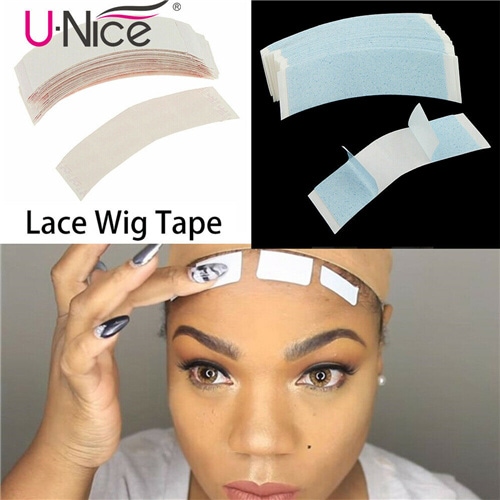
As mentioned above, wig tapes are the most preferred method of securing a hair wig. They are available in rolls or in pre-cut to match the shape of the attachment area. Tapes are typically clear and they come in numerous liner colors that show the degree of tackiness. It is generally thicker than glue and may create a small single edge.
In most cases, the tape is usually shiny and visible through the lace. Low Profile Tapes are designed for ladies with sensitive skin. There are tapes that are specifically made for lace and thin skin. Wig tapes are generally simple to use and they are handy. They provide an easy technique of connection, washing, and extraction.
Benefits of using wig tapes
As already mentioned above, when it comes to securing a wig, you can use wig tape or glue. But the best option would be to use tape adhesive over the glue. Here are some of the benefits of using wig tape adhesive.
1. Faster installation
It is no secret that installing a wig using tape is pretty faster compared to when one is using glue. It can take about 30-60 minutes to install a wig using wig tape. On the other hand, it will take longer to install your wig using glue. That's because you must ensure that the wig glue is evenly spread in areas that will come into contact with the wig. What's more, the wig tape can last up to 12 weeks if properly installed and maintained.
2. The damage reduction
If you have a weak hairline and are worried that glue can harm it even further, wig tape is the best alternative. Wig tape has less or no chance of damaging your natural hair or hairline. Besides, they are light, therefore less likely to harm your hair. In addition to that, they are simple to mount.
3. They give wig wearers a more realistic look
Of course, when wearing a wig, you want to achieve a more natural look as much as possible. You can easily achieve that with wig tape. That's because wig tapes are undetectable.
4. Ideal for ladies with sensitive skin
Another incredible benefit of wig tape is that it is perfect for ladies with sensitive skin. On the other hand, glue adhesive is not a perfect option for people who have sensitive skin. They have chemicals that can make people react to, causing irritation or even inflammation.
5. It is easy to remove
Removing wig tape is pretty easy compared to removing the glue. Sometimes, you can remove the wig tape by just peeling it right off the hair system. However, this depends on the tape and the base it is being used on.
How to use wig tape?
Now that you have explored what wig tape is all about and some of the benefits of using it to install a lace front human hair wig, let's now see how you can use it.
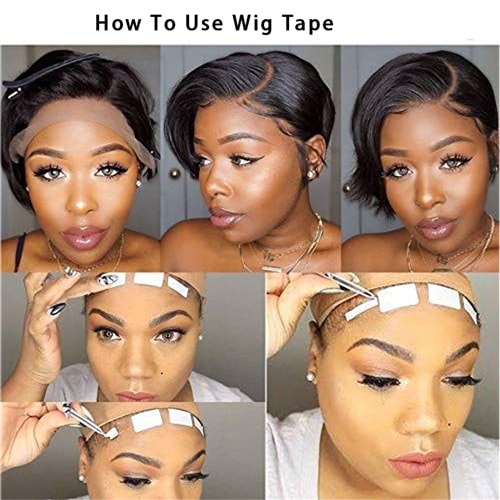
When applying wig tape, make sure the areas that you intend to put on the tape are clean so that the tape can stick to your skin firmly. To achieve that, take cotton wool and dip it in an alcohol-based solution and wipe the areas you want to put on the tape.
Cut as several wig tape strips you will need to cover the sections you want to secure, whether it is just the sides of the wig or other areas you feel may need additional security.
Peel one side of the wig tape and place it onto the silicone in the areas you would like to secure.
When you are ready to put the wig on, peel away the other side of the tape and avoid touching it as you gently and slowly put your wig on.
Finally, when you feel happy with where the wig's position, apply pressure to where the tape is. It is as simple as that. You are done securing your wig.
It is worth mentioning that you should ensure that the tape sticks to your skin and not your hairline areas. This will ensure that it adheres well and the wig stays secured throughout the day.
If you are interested, here is a detailed video of how to properly use tape adhesive to Apply your wig. Maybe can make you get more clear of the step by steps.
How To Remove Wig Tape?
The easiest way to remove wig tape is to use a solvent or alcohol-based adhesive remover. Using a cotton ball dipped in the solvent or alcohol, gently dab along the hairline where the tape lies to release the adhesion. Slowly lift your wig until the tape releases easily. Don't force it; if it's still sticking, keep going with the adhesive remover until it comes loose.
Once your wig is off, you can use the adhesive remover to remove any leftover sticky bits from your skin. A microfibre towel will help get any residue from the inside of your wig. We recommend showering and moisturizing after doing this so that there is no residual adhesive remover on your skin or hair.
Faq about wig tape
How long does lace wig tape last?
You can use it for all kinds of hair products, wigs, toupees, hairpieces, hair systems,s, and so on. Long-Lasting Hold with good care for 2-4 weeks. Depending on the temperature, humidity, and body oils, they can last up to 6 weeks.
TAPE VS. GLUE, Which is better?
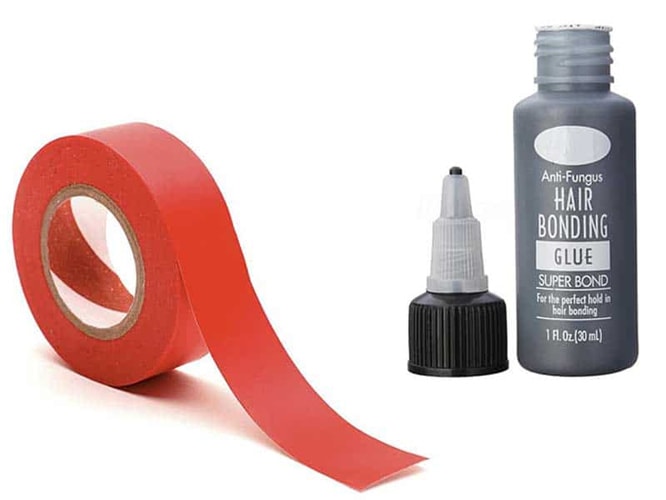
Which is easier to use?
Tape. Tape requires no mess and is easy to apply. If you do mess up during the application process, it's easy to remove the tape and readjust your wig--easier than it is to wash off the glue and start over.
Which is better for a natural look?
Glue. While tape can look extremely natural, beginners risk leaving part of the tape visible. On the other hand, the glue dries clear, so you can be sure that you'll have a more natural look.
Which gives a stronger hold?
They can both give an equal stronghold, especially because both glue and tape come in a wide range of strengths, from a lighter grip that is good for sensitive scalps to a tight grip that is perfect for people who hit the gym.
Which is easy to remove during the day?
Neither. If you want to remove your wig during the day, either to cool down or to quickly swap it out for another look, you will be much better served by wig clips or bobby pins. Tape and glue will both take a great deal of effort, and removing and reapplying them too often can irritate your edges.
Read more: Lace Wig Adhesive: Which Is Better Tape Or Glue?
How to Put on a Wig without a Wig Cap?
Fake scalp lace wigs will be your best choice if you're more willing to wear a wig without a wig cap. The pre-made fake scalp is designed to take the place of the wig cap, hiding the natural hair in the front parting area.
Time to Try Your New Look!
There you have it! Now you know the best ways to secure a wig. Try a classic beginner style with bobby pins or wig clips, or create a seamless hold with elastic bands or a wig grip.
If you're always on the go, then wig tape or wig glue will provide the strongest hold. If you work out or hope to wear your wigs for multiple days at a time, then this is the method for you.
Good news: If you are looking for No Lace, No Gel, No Leave Out, No Sew-in.UNice Curly V Part Wig, allow you to wear your own real scalp in your parting area. More Natural, Easier To Install, you must have a try!
Halloween,GIVE the lace break,Time to try Glueless V Part

Breathable And Comfortable
No Lace, No Glue, Or Gel
No Leave Out Needed, No Sew In
No Stocking Cap Needed Super Natural Looking
Blend Perfectly With Your natural hairline
Matches The Roots Of Your Hair
Can Put ON And Take Off Everyday
O Skill Needed Wig
Practive Hairsdtyle For Natural Hair











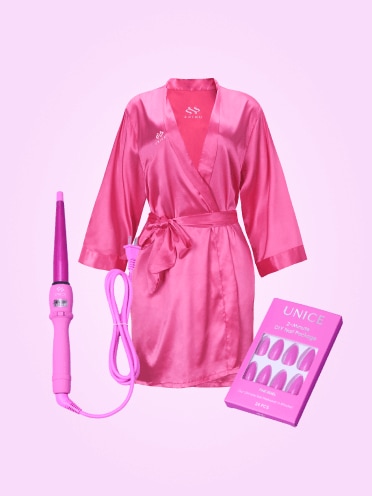
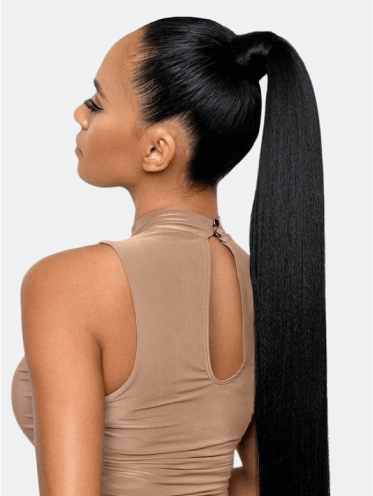


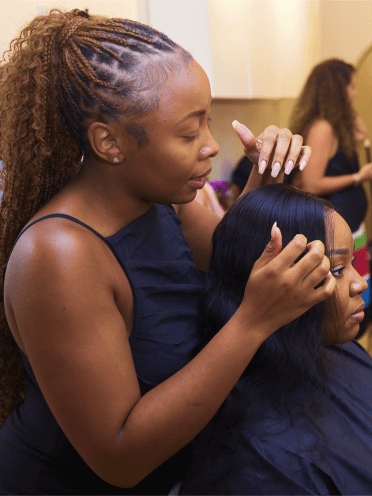









Submit Your comment